From 1950 to 1979, Vietnam carried out 3educational reforms. Of which, the 3rd reform was carefully prepared from 1960 to be ready for the Liberation Day of the South and the reunification of the country. Professor Pham Tat Dong was a witness to all 3 of those reforms.
Prof. Dr. Pham Tat Dong was the former Deputy Head of the Central Committee for Science and Education, and former Vice President of the Vietnam Association for Promoting Education. He participated in the first educational reform at the age of 18, teaching primary school students also 17 and 18 years old in the Hoang Hoa liberated zone, Thanh Hoa province.
A few years later, during the second educational reform, he was sent for training to serve the third reform. But it was 19 years after the preparation that the third reform could begin.
The first educational reform took place in 1950. Why at this time and not right after the August Revolution in 1945 - when the country gained independence, or after the Dien Bien Phu victory in 1954 - when peace was restored in the North, sir?
- After gaining independence, we should have reformed education, but conditions at that time did not allow it. In 1946, the whole country was in resistance, the Government had to move the capital to Viet Bac.
By 1950, after the border victory, we opened the way to socialist brother countries, the opportunity for victory became clear. That context posed urgent tasks for education, both serving the resistance more strongly and preparing for the country's post-war reconstruction.
For that reason, education reform took place right in Viet Bac. At that time, I was 16 years old.
At the age of 16, I was sent to China for teacher training. In 1952, I returned home and officially became a teacher of the reformed curriculum without any textbooks in hand.
I must also add that, after returning from China, I asked to go to the Binh Tri Thien battlefield. I thought, I am a young man, I will go to any difficult place. In the past, I did not care about hardship. But when I reached Ha Tinh, the leaders did not let me go any further.
He said: "You are so young, you will die in just a month. The battlefield is very fierce. I will keep young people who are well-trained from entering, so that later, when the resistance is successful, they can contribute to the country." No matter how I asked, I was not accepted, so I had to go back to Thanh Hoa and become a teacher.
Teaching the reform program without a textbook in hand, what difficulties did you encounter?
- There were no significant difficulties. I was assigned to teach grade 4, math. The place I worked was Hoang Hoa, Thanh Hoa province, which was a free zone at that time. Because our army carried out the scorched earth resistance, the entire Thanh Hoa city at that time was full of rubble, everything was in ruins, only the church remained.
Most of the students in my class were my age, 17-18 years old. When we entered class, we put down our rifles and put them on the wall. When we finished school, we picked up our guns and went to fight.
The 1950 reform program was mainly for general education. To serve the resistance war, we advocated shortening the number of school years and establishing a 9-year general education program. We teachers were required to memorize the program to enter enemy territory empty-handed, and when we returned to our hometowns, we had to prepare our own lessons.
There are no curriculum documents, let alone textbooks.
Later, during the second educational reform, there were textbooks, but they were very simple and each school only had one set. Teachers had to use them together, prepare lessons together, and then find additional materials themselves. However, not having textbooks was not a difficulty or obstacle for us.
Until now, I still hold the view that writing many textbooks is unnecessary. Especially in today's context, just open the internet and you can easily find documents.
The second education reform took place just 6 years after the first. How did you and the teachers at that time adapt to the new reform program?
- After the Dien Bien Phu victory, the North was liberated, the new task of the revolution was to unify the two education systems: the 9-year general education system in Viet Bac as well as the resistance zones and the 12-year general education system that the French implemented in the former temporarily occupied areas. Education reform had to be carried out and the 10-year general education program was born.
This program was mainly copied from the Soviet Union, with the view of learning to do, learning to do immediately. Students can go to work after finishing secondary school. Adults who have completed cultural education can work in factories and enterprises.
Even teachers only had to train for a few sessions before they could start teaching. At that time, we jokingly called them “jackfruit tree” teachers, because we trained each other under the tree. Teachers learned while working. Those who were not good enough asked those who were better. That was how we adapted to the reform program.
Compared to now, the quality of teachers at that time was "mixed". But strangely, I never heard people complain about bad textbooks or inconsistent curriculum, nor did I hear negative feedback about teachers.
That was an extremely happy time for us teachers, despite poverty, hunger, and deprivation in every way. It was so happy that, after half a century, teachers and students still considered each other as close brothers.
According to you, what is the most important achievement of the second educational reform?
- In addition to the achievement of eliminating illiteracy that we often mention, this reform also created a new school model: bringing production labor into schools, education and training closely linked to practice. The three leading flags of this school model are Bac Ly School - Ha Nam, Hoa Binh Socialist Labor Youth School and Cam Binh - Ha Tinh learning commune system.
People used to think that building a model of universal education at 3 levels, from primary to high school in one commune, was an illusion. But the result was that Cam Binh succeeded. All 3 models mentioned above became heroes.
Please share more about bringing production labor into schools. At that time, I was assigned to Hai Phong to teach at Southern Student School No. 14. Teachers and students only studied half a day, the other half had to work.
We did everything we could to increase production: we made our own chalk, grew our own vegetables, raised geese for food, and made our own charcoal (a type of charcoal mixed with mud and shaped into a charcoal ball) for fuel. Any surplus was sold to the people.
I remember my school raised more than 1,000 geese. Every day, 3 students were assigned to herd the geese. They drove the geese out to the fields, across Rao Bridge towards Do Son, the geese made a loud, pleasant noise.
In 1959, in the early stages of the second educational reform, the entire Northern Delta and midland region basically eliminated illiteracy. An important task was completed. So from when did the Government raise the issue of the third reform, sir?
- I remember in 1960, the Ministry of Education started preparing for the third reform. I was sent to university. Those who were selected to attend training for the third reform all took two courses. One specialized course and one education course. So we had two university degrees.
In 1961, the Institute of Educational Research was established, with the main purpose of educational reform. The Institute has research groups on educational reform in the Soviet Union, Bulgaria as well as other socialist countries.
The highest leaders were Prime Minister Pham Van Dong - Chairman of the Central Education Reform Committee, and General Vo Nguyen Giap. Under his command were two ministers Nguyen Van Huyen and Ta Quang Buu. Preparations for reform were carefully organized.
However, in 1965, the US escalated its bombing of the North, and the reform could not be implemented. After the liberation of the South and the reunification of the country in 1975, we intended to do it immediately, but for many objective reasons we had to delay. It was only after the battle to protect the northern border in 1979 that we were able to carry it out. The person directly implementing the reform was Ms. Nguyen Thi Binh - then the Minister of Education.
Compared to the previous two reforms, what is special about the mission of the third reform, sir?
- The third reform took place at a special time, so it also had special tasks. To unify the country, the revolutionary requirement for education was to unify the two educational systems of the North and the South.
At that time, the North had a 10-year general education system, influenced by the Soviet Union, and the South had a 12-year general education system, influenced by France and the United States. How could we reform the entire general education content in both regions according to a unified program throughout the country?
Besides, after 1975, the North had eliminated illiteracy, while in the South, the illiteracy rate was around 30%. To eliminate illiteracy in the newly liberated areas, a reinforcement force from the North was needed.
In addition to urgent tasks, the third educational reform must address three goals: one is to nurture children from childhood to adulthood, aiming to form collective masters and comprehensively develop workers; two is to universalize education for all people, building collective mastery for the people; three is to prepare human resources well to address three revolutions: the revolution in production relations, the cultural and ideological revolution, and the scientific and technological revolution.
At the same time, the educational principles are still inherited from the second reform, which are: learning goes hand in hand with practice, education is combined with productive labor, and schools are closely linked to society.
From 1979 to before the renovation, the difficulties of the subsidized economy had a significant impact on educational reform. Triple-digit inflation, devaluation of currency, insufficient production, and miserable lives for teachers.
However, we still taught and wrote textbooks - the first set of books to be used nationwide after reunification. Most of today's senior officials grew up from this reform.
What are your memorable memories of the days when you organized the compilation of the first set of textbooks for a unified Vietnam?
- A few years ago, I was hospitalized. Ms. Binh (former Vice President, former Minister of Education Nguyen Thi Binh) and many old colleagues from the Institute of Educational Sciences visited me. She recalled the time when we wrote books. Then she laughed and said: "Back then, we didn't earn a penny writing books."
The writing team has about 200 people, writing for subjects from grade 1 to grade 12. The only source of nutrition is probably a bowl of "unmanned" pho, just noodles and broth, before work. And only occasionally.
After the third reform, the country's education system has undergone several renovations and is in a period of fundamental and comprehensive renovation. How do you view this renovation?
- Innovation has the advantage of being timely and the disadvantage of being difficult to synchronize. Before this 4.0 revolution, if we do not take advantage of it and are not determined to make an educational revolution when the country goes digital, it will be a pity. I still hope for a 4th educational revolution, not just reform or innovation.
The reason I hope and support such a revolution is because our young generation is gradually entering a completely new world of careers, a world that the old educational program cannot meet. Each era has its own people. If today you teach children with knowledge of the past, you will not be careful and will lose the future.
In addition, the first Beta generation born on New Year's Eve 2025 is already 4 months old. The first Alpha generation is about to finish middle school. The first Generation Z has already started entering the labor market. Children do not wait for us to grow up.
If there is a 4th industrial revolution, what goals do you think education will have to address?
- General Secretary To Lam and Prime Minister Pham Minh Chinh have both made the goal very clear. That is to train people who are lifelong learners, dare to think, dare to speak, dare to do, dare to take responsibility, dare to sacrifice for the common good to become useful people for society. That is popular digital education to popularize digital knowledge, improve digital skills, and eliminate technological illiteracy for the entire population.
To do both, we need a radical change in education.
In addition, we should not be afraid of brain drain. Let's take advantage of brain circulation. Let's encourage Vietnamese people to go out into the world. In a flat world, if a person does not work for the country but works internationally, the country still benefits. If Vietnam has many professors teaching abroad, that would be great. Because truly knowledgeable people will always find ways to repay their debt to society and the country.
Thank you for this conversation!
Content: Hoang Hong
04/25/2025 - 12:34
Source: https://dantri.com.vn/giao-duc/3-cuoc-cai-cach-giao-duc-tu-chien-khu-viet-bac-den-ngay-thong-nhat-20250425095705559.htm



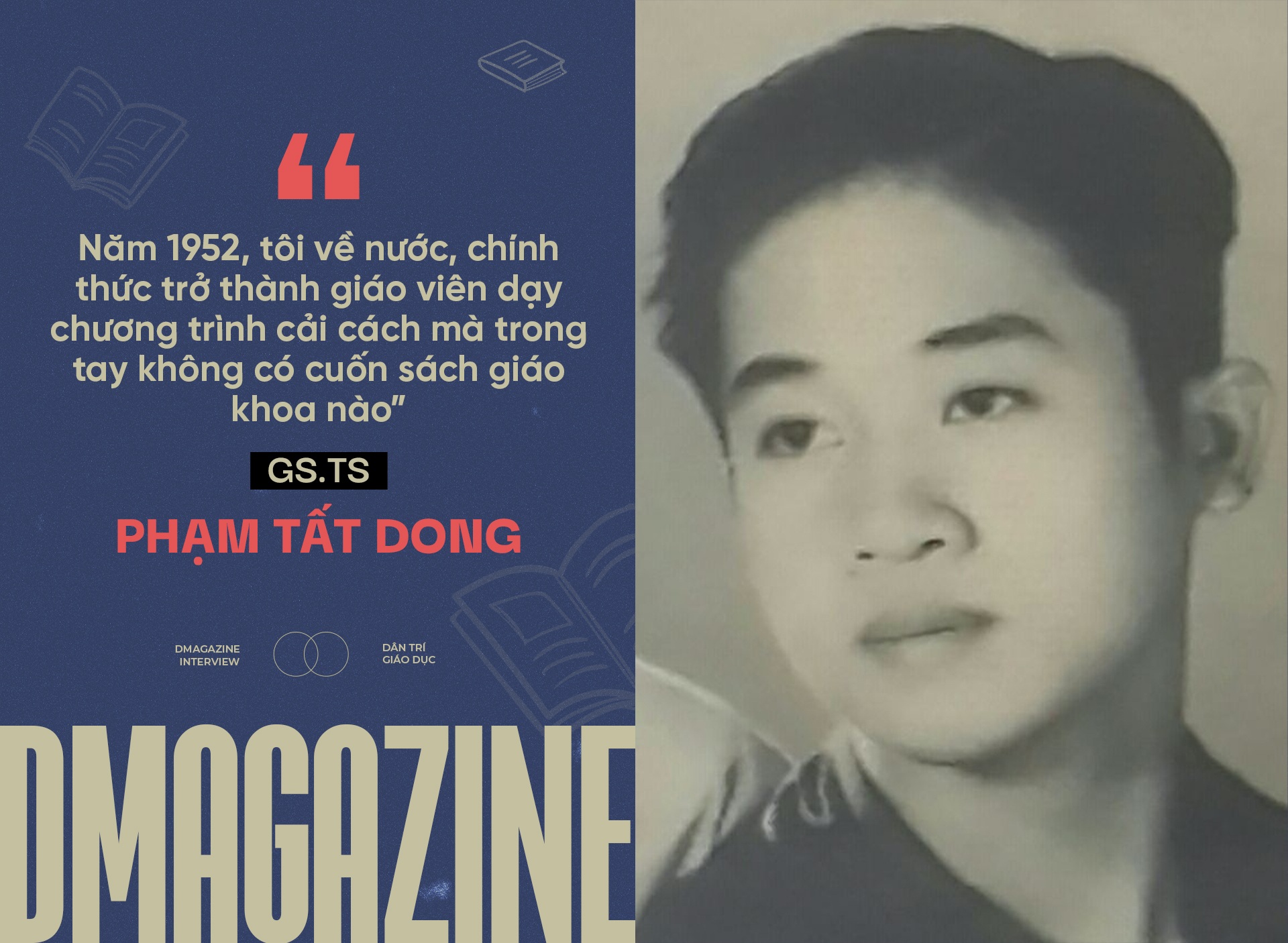
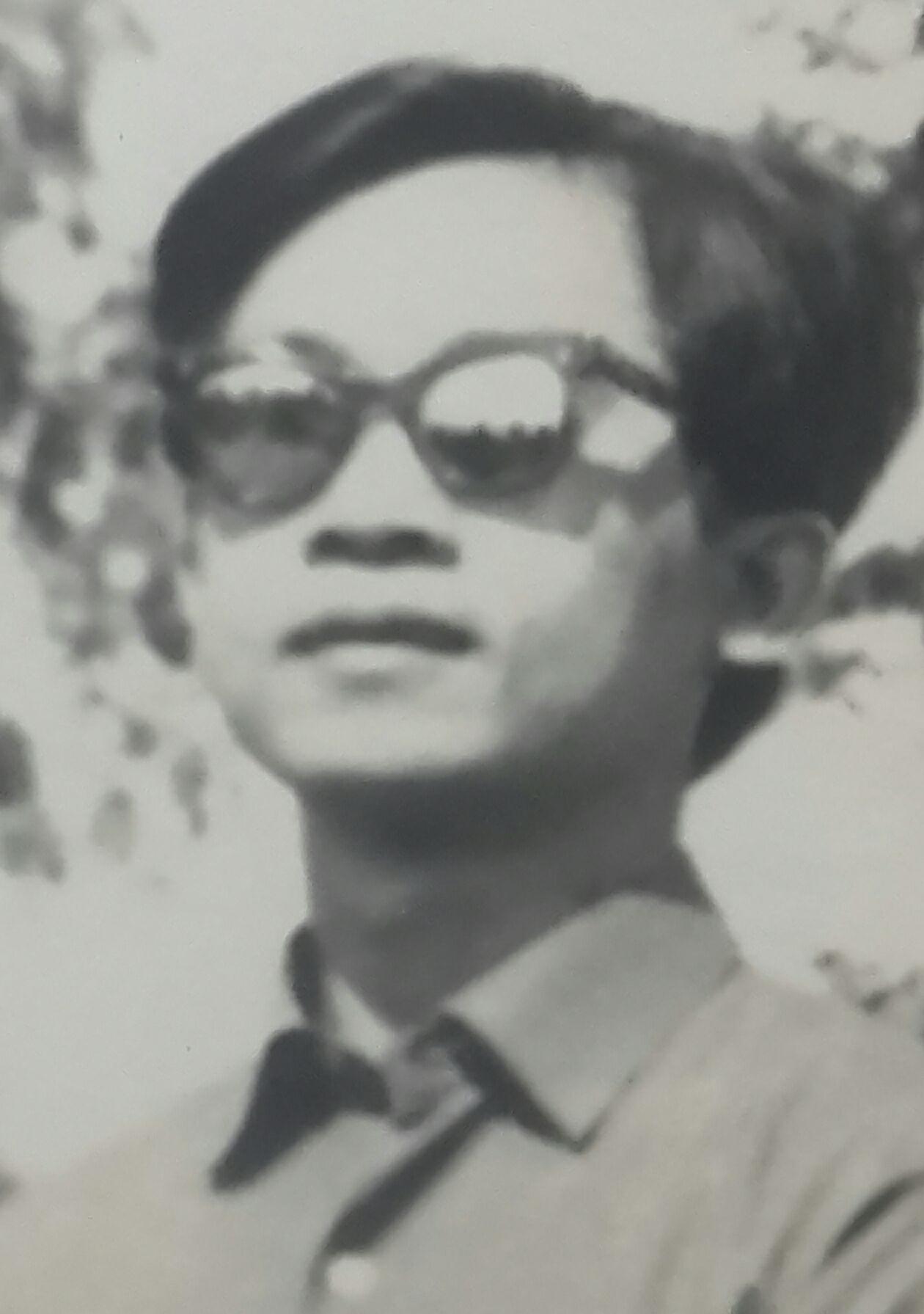
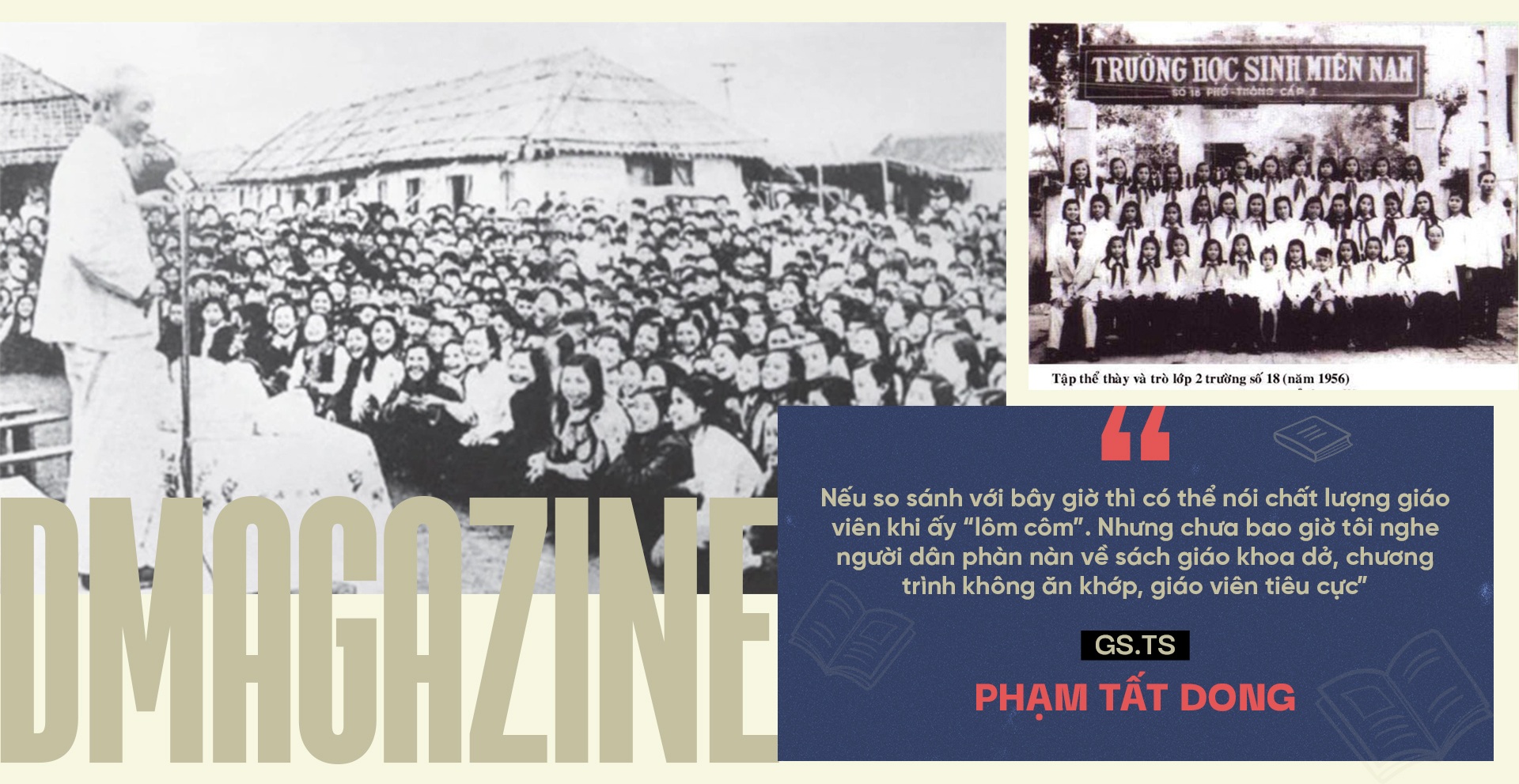

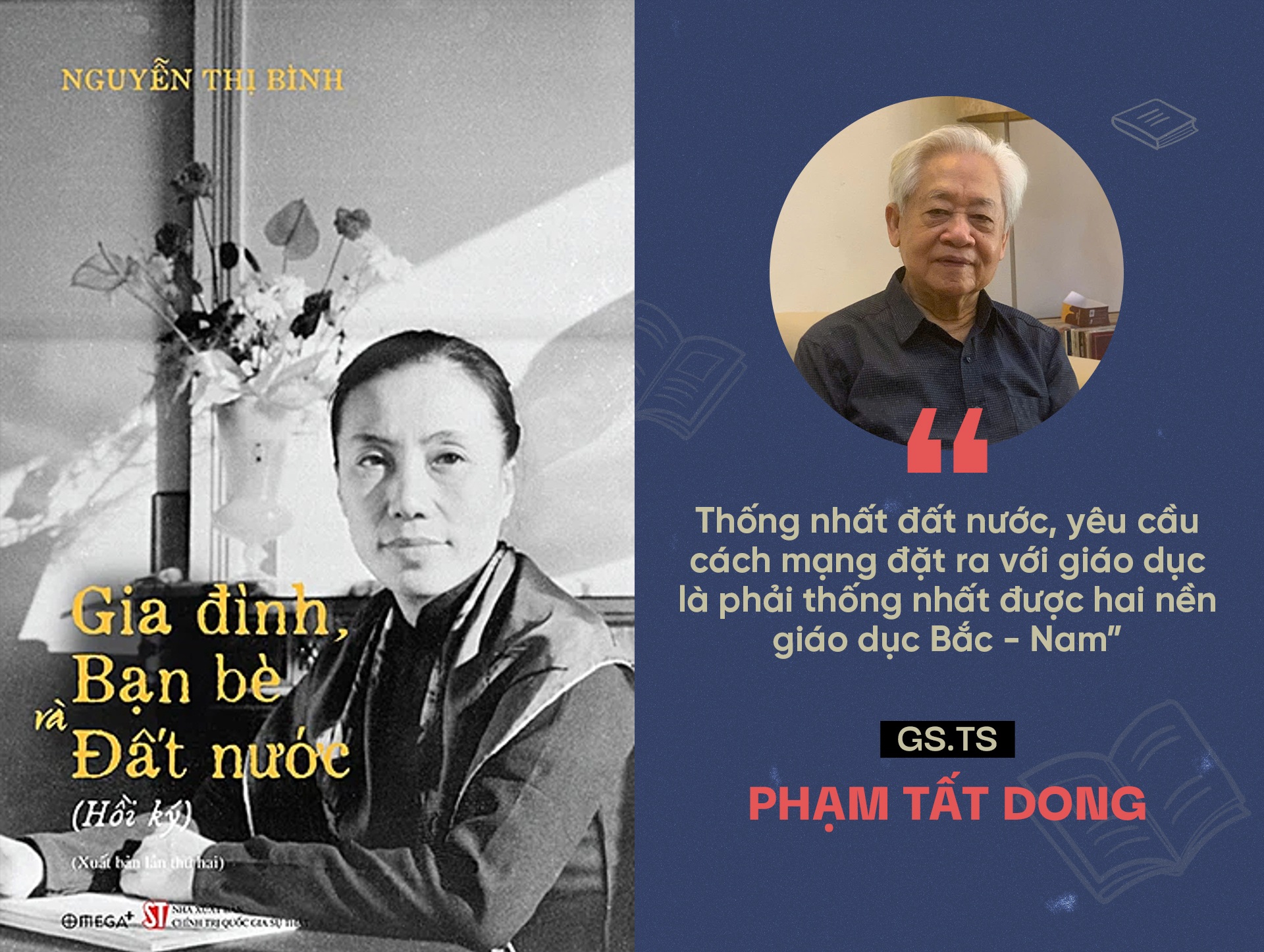
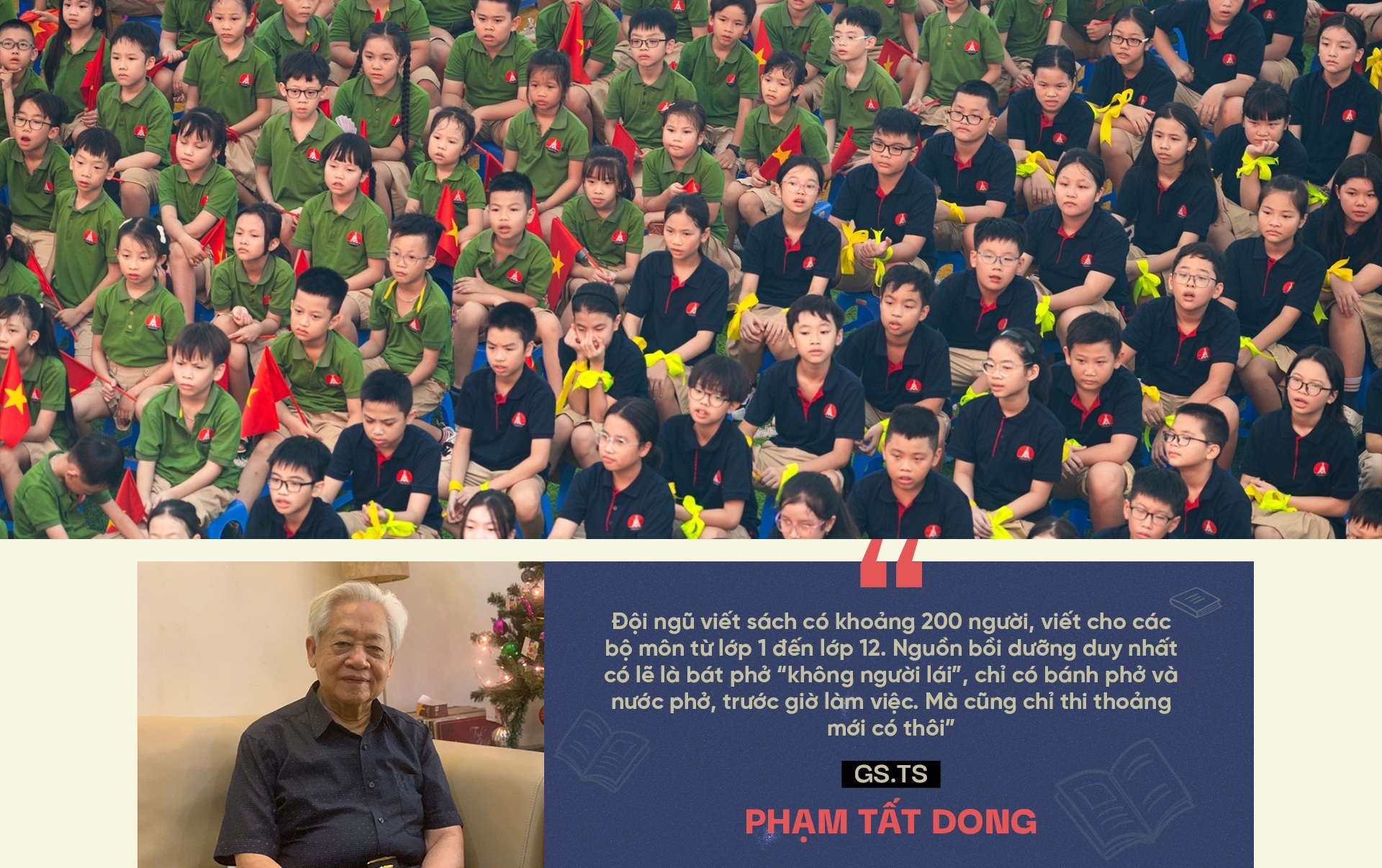

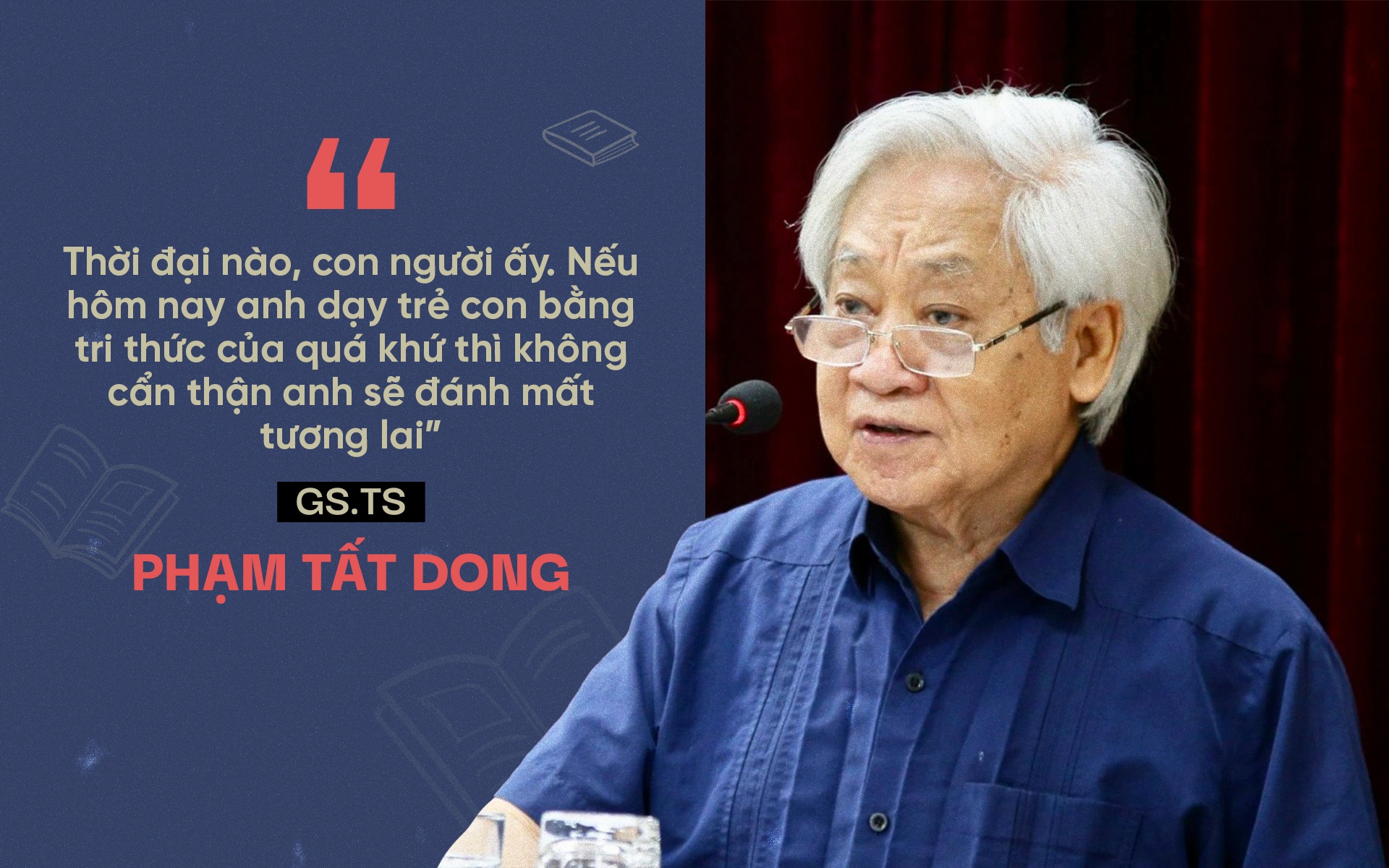

![[Photo] More than 17,000 candidates participate in the 2025 SPT Competency Assessment Test of Hanoi National University of Education](https://vphoto.vietnam.vn/thumb/1200x675/vietnam/resource/IMAGE/2025/5/17/e538d9a1636c407cbb211b314e6303fd)
![[Photo] Readers line up to visit the photo exhibition and receive a special publication commemorating the 135th birthday of President Ho Chi Minh at Nhan Dan Newspaper](https://vphoto.vietnam.vn/thumb/1200x675/vietnam/resource/IMAGE/2025/5/17/85b3197fc6bd43e6a9ee4db15101005b)

![[Photo] Prime Minister Pham Minh Chinh chairs meeting on science and technology development](https://vphoto.vietnam.vn/thumb/1200x675/vietnam/resource/IMAGE/2025/5/17/ae80dd74c384439789b12013c738a045)
![[Photo] Nearly 3,000 students moved by stories about soldiers](https://vphoto.vietnam.vn/thumb/1200x675/vietnam/resource/IMAGE/2025/5/17/21da57c8241e42438b423eaa37215e0e)
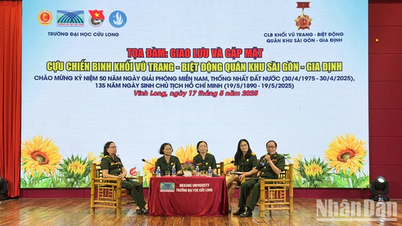

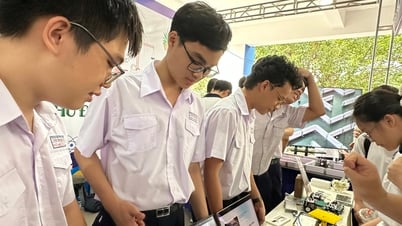

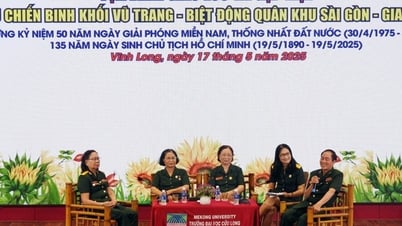

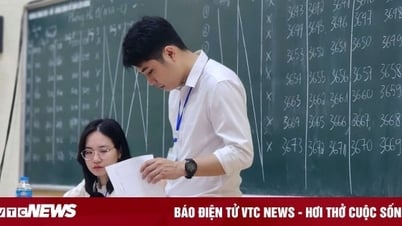

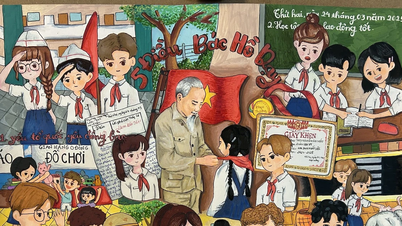





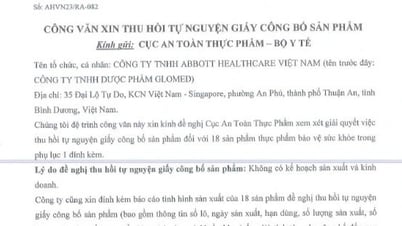


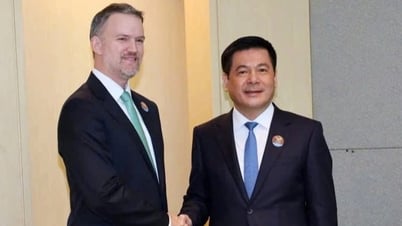






















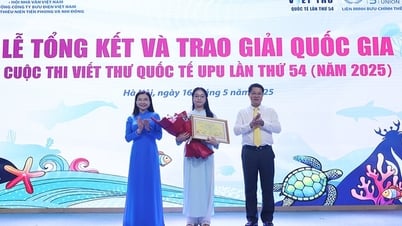
































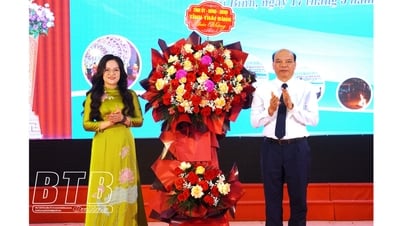



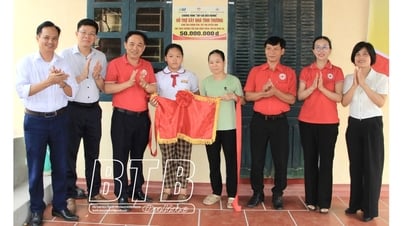
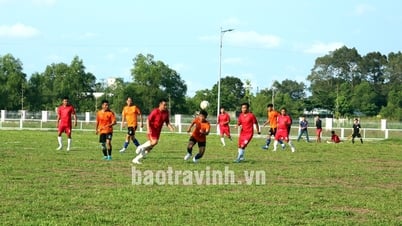
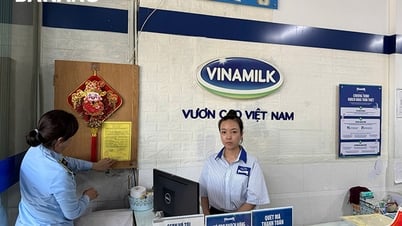

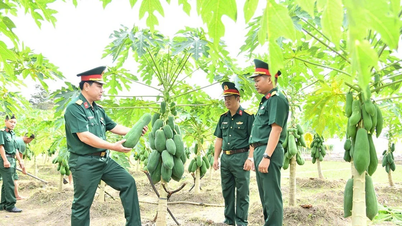












Comment (0)